The curve given below shows enzymatic activity with relation to three conditions (pH, temperature and substrate concentration). What does the two axis (x and y) represent ? 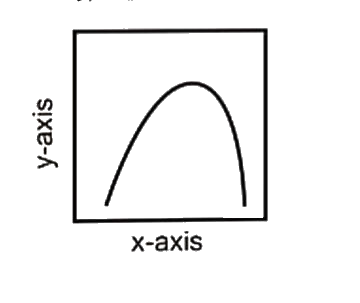
X-axisY-axisTemperatureEnzyme activity
X-axisY-axisEnzyme activitypH
X-axisY-axisEnzyme activityTemperature
More than one option is correct
The correct Answer is:A
Step by step video, text & image solution for The curve given below shows enzymatic activity with relation to three conditions (pH, temperature and substrate concentration). What does the two axis (x and y) represent ? by Biology experts to help you in doubts & scoring excellent marks in Class 12 exams.
Updated on:21/07/2023Topper's Solved these Questions
Similar Questions
The curve given below shows enzymatic activity with relation to three conditions (pH, temperature and substrate concentration). What does the two axis (x and y) represent ?

View Solution(a) The graph given below represents the organisms response to temperature as an environmental condition.
(i) Which one of the two lines represents conformers and why ?
(ii) What does the other line in the graph represent and why ?
(b) Mention the different adaptations the parasites have evolved with, to be able to successfully complete their life cycles in their hosts.
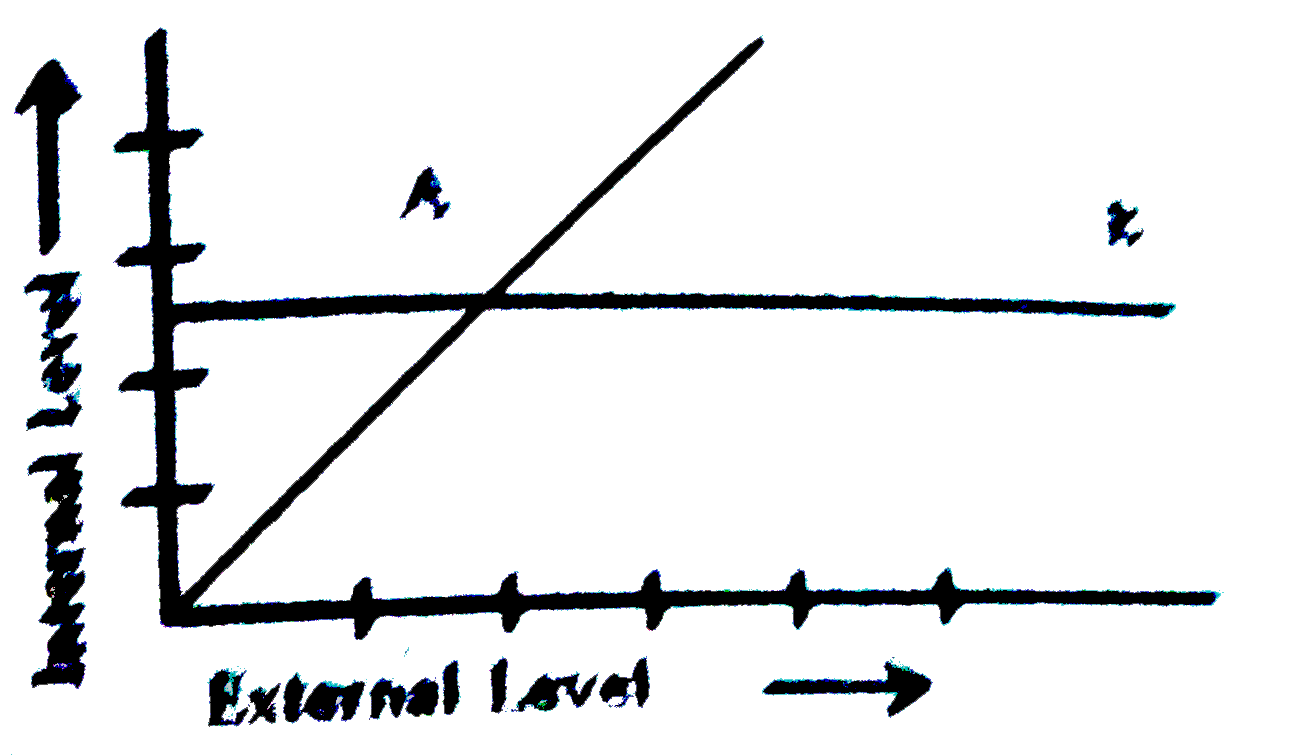
View Solution
Knowledge Check
the curve given below shows wnzymatic acitvity with relation to three conditions (pH , temperature and substrate concentration ).
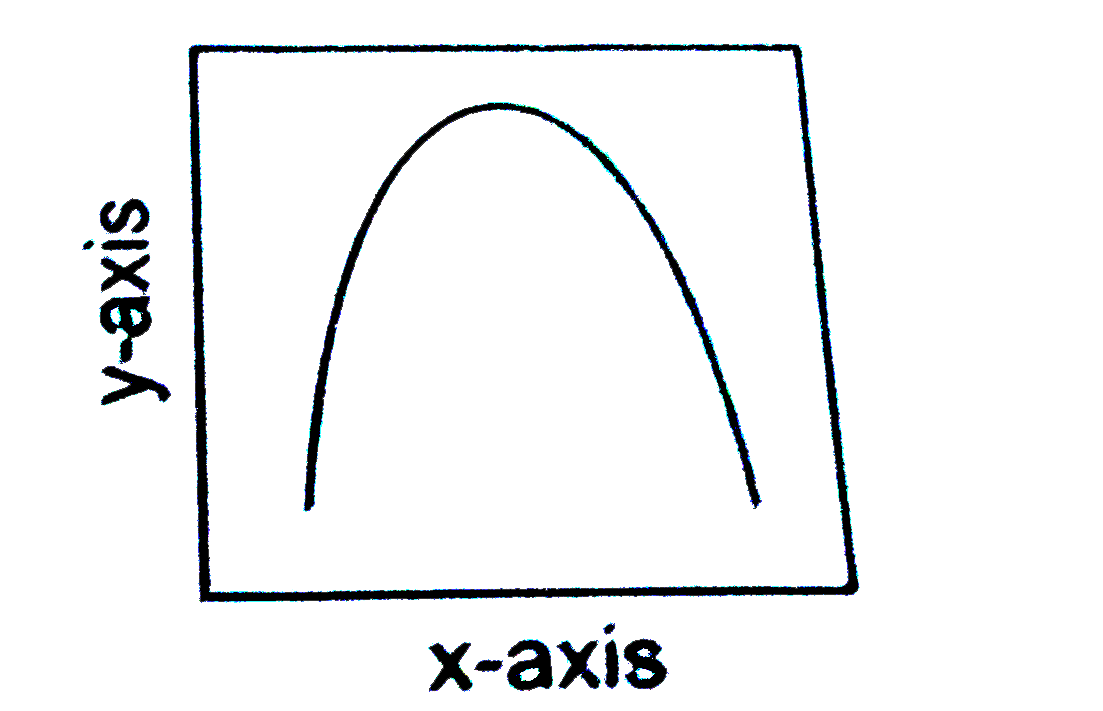
what do the two axes ( x and y) represent ?AEnzymatic acticity , temperatureBEnzymatic activity ,pHCTemperature enzye activityDSubstrate concentration enzymatic activityThe curve given show enzymatic activity with relation to three conditions (pH, temp: and substrate conc.). What do the two axises (x and y) represent?
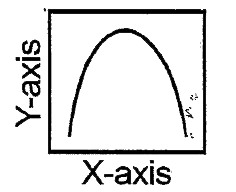 Ax-axis - Enzymatic activity, y-axis - pHBx-axis - Temperature, y-axis - Enzyme activityCx-axis - Substrate conc., y-axis - Enzymatic activityDx-axis - enzymatic activity, y-axis - temperature
Ax-axis - Enzymatic activity, y-axis - pHBx-axis - Temperature, y-axis - Enzyme activityCx-axis - Substrate conc., y-axis - Enzymatic activityDx-axis - enzymatic activity, y-axis - temperatureFigure given below shows three velocity-substrate concentration curves for an enzyme reaxtion. What do the curves for an enzyme reaction. What do the curves depict
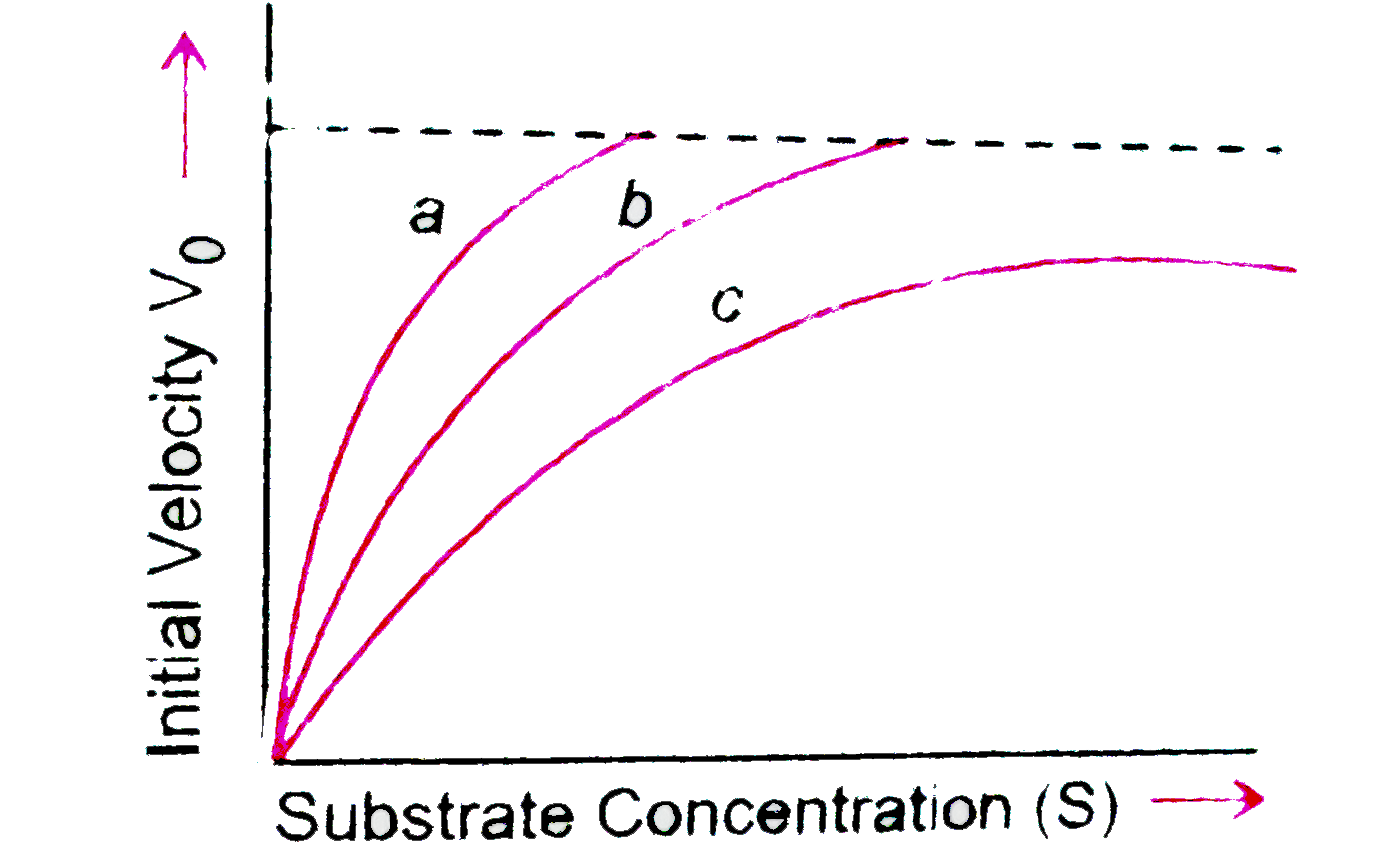 Aa-normal enzymes action, b-competitive inhibition,c-noncompetitive inhibitionBa-enzyme with an allosteric modulator added, b-normal enzyme activity, c-competitive inhibitionCa-enzyme with an allosteric stimulator,b-competitive inhibition added, c-normal enzyme reactionDa-normal enzyme reaction, b-non-competitive enhibition added c-allosteric inhibitor add.
Aa-normal enzymes action, b-competitive inhibition,c-noncompetitive inhibitionBa-enzyme with an allosteric modulator added, b-normal enzyme activity, c-competitive inhibitionCa-enzyme with an allosteric stimulator,b-competitive inhibition added, c-normal enzyme reactionDa-normal enzyme reaction, b-non-competitive enhibition added c-allosteric inhibitor add.
The graph given below represents the organisms reponse to temperature as an environmental conditions :

(i) Which one of the two lines represents conformers and why ?
(ii) What does the other line in the graph represent and why ?
(b) Mention the different adaptations the parasites have evolved with , to be able to successfuly complete their life cycle in their hosts.
View SolutionThe Given figure shows three velocity-substrate concentration curves of an enzyme reaction. What do the curves X Y and Z depict respectively ?
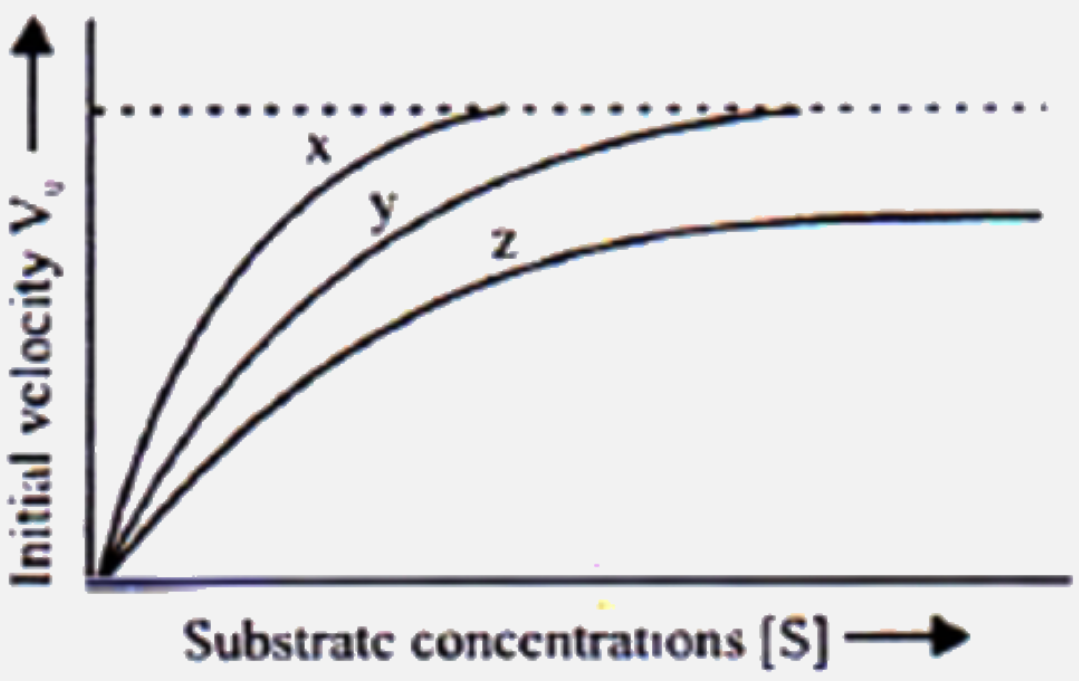
View SolutionThe graph given below shows the effect of substrate concentration on the rate of reaction of the enzyme green-gram-phosphatase What does the graph indicates?
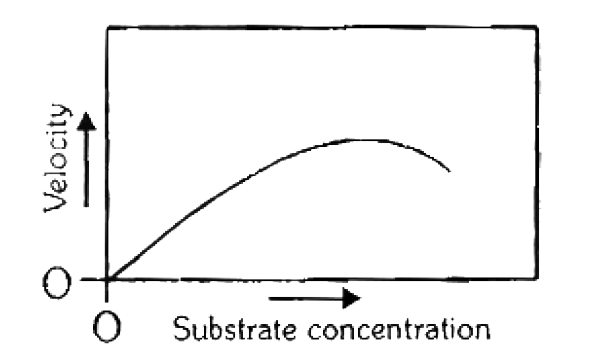
View SolutionThe given figure shows three velocity-substrate concentration curves for an enzyme reaction. What do the curves x, y and z depict respectively?
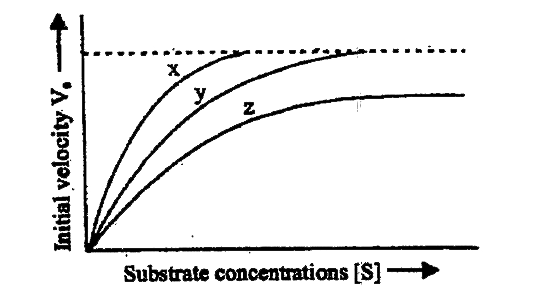
View SolutionThe given graph shows the effect of substrate concentration on the rate of reaction of the enzymes green gram-phosphatase. What does the graph indicate ?

View Solution

